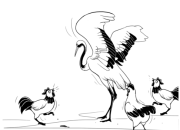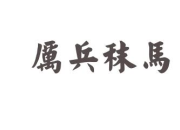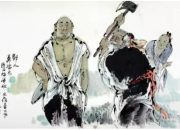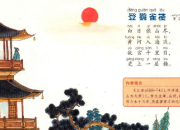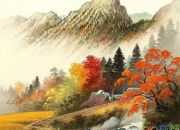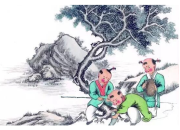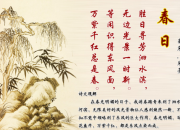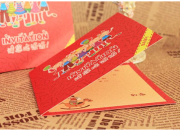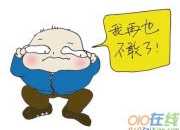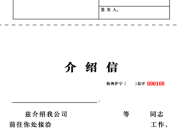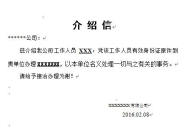屈原端午节的故事缩写
时间:2021-08-31在端午节这一天,家里都会准备一些好吃的,尤其是粽子。那么屈原端午节的故事大家知多少?
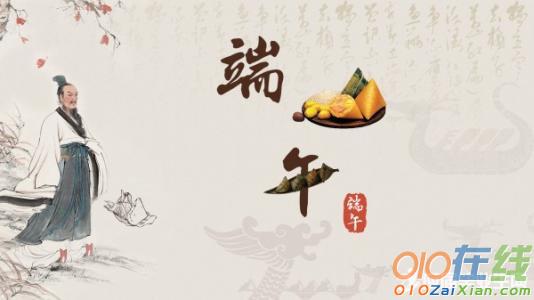
农历五月初五,俗称端午节,是华人夏季最盛大的传统节日, 和春节、中秋并列为华人传统三大节日。“端,初也”,也就是“开始”的意思。 按地支顺序推算,五月为“午”,而“午”与“五”又同音, 所以,“端午”又称“端五”。五月五日,月与日同为五,故古也称为重五,与九月九日称重九之意相同。 古人也把“午时”当作“阳辰”,所以端午也有“端阳”之称。明清时代,北京一带也把端午节称作“女儿节”或“五月节”。
端午节起源的说法有好几种, 其中以纪念两千多年前,愤投汨罗江的中国大诗人屈原说最广为流传。
屈原是楚怀王时的大臣,备受楚怀王重用。 此举引起上官大夫及令尹子兰的嫉妒,诽谤屈原,离间楚王和屈原之间的关系。 楚王继而逐渐疏远屈原,甚至将屈原放逐。
眼见楚国濒临绝境,因谗臣误国,将为秦国所灭,屈原满怀悲愤,在写下了绝笔作《怀沙》后,怀石投汨罗江自尽。
屈原死后,楚国的百姓哀痛非常,涌至汨罗江边去凭吊屈原。 而渔夫们也撑起了船只,在江上打捞屈原的尸体。 他们还把粽子、鸡蛋等食物,往江里面丢,希望喂饱鱼虾,不让它们夺食屈原的尸体。
还有人拿了一坛雄黄酒倒进江里,希望药晕江里的蛟龙。 据说,当时水面上浮起了一条昏晕的蛟龙,龙须上还沾著一片屈大夫的衣襟。 人们就把这恶龙拉上岸,抽了筋,把龙筋缠在孩子们的手和脖子上,又用雄黄酒抹七窍,使那些毒蛇害虫都不敢来伤害这些小孩子。
因为屈原投江的那天是五月初五,从此以后,每年的这一天, 人们便要划龙舟、吃粽子、喝雄黄酒来纪念屈原, 甚至还在这天到来时,特地把菖蒲或艾草插在门上。
端午节的来历(双语)
The Dragon Boat Festival, the 5th day of the 5th lunar month, has had a history of more than 2,000 years. It is usually in June in the Gregorian calendar.
端午节是古老的传统节日,始于中国的春秋战国时期,至今已有2000多年历史。
There are many legends about the evolution of the festival, the most popular of which is in commemoration of Qu Yuan (340-278 BC). Qu Yuan was minister of the State of Chu and one of China's earliest poets. In face of great pressure from the powerful Qin State, he advocated enriching the country and strengthening its military forces so as to fight against the Qin. However, he was opposed by aristocrats headed by Zi Lan, and later deposed and exiled by King Huai.
据《史记》“屈原贾生列传”记载,屈原,是春秋时期楚怀王的大臣。他倡导举贤授能,富国强兵,力主联齐抗秦,遭到贵族子兰等人的强烈反对,屈原遭馋去职,被赶出都城,流放到沅、湘流域。
In his exiled days, he still cared much for his country and people and composed immortal poems including Li Sao (The Lament), Tian Wen (Heavenly Questions) and Jiu Ge (Nine Songs), which had far-reaching influences. In 278 BC, he heard the news that Qin troops had finally conquered Chu's capital, so he finished his last piece Huai Sha (Embracing Sand) and plunged himself into the Miluo River, clasping his arms to a large stone. The day happened to be the 5th of the 5th month in the Chinese lunar calendar.
他在流放中,写下了忧国忧民的《离骚》、《天问》、《九歌》等不朽诗篇,独具风貌,影响深远(因而,端午节也称诗人节)。公元前278年,秦军攻破楚国京都。屈原眼看自己的祖国被侵略,心如刀割,但是始终不忍舍弃自己的`祖国,于五月五日,在写下了绝笔作《怀沙》之后,抱石投汨罗江身死,以自己的生命谱写了一曲壮丽的爱国主义乐章。
After his death, the people of Chu crowded to the bank of the river to pay their respects to him. The fishermen sailed their boats up and down the river to look for his body. People threw into the water zongzi (pyramid-shaped glutinous rice dumplings wrapped in reed or bamboo leaves) and eggs to divert possible fish or shrimp from attacking his body. An old doctor poured a jug of reaglar wine (Chinese liquor seasoned with realgar) into the water, hoping to turn all aquatic beasts drunk. That's why people later followed the customs such as dragon boat racing, eating zongzi and drinking realgar wine on that day.
传说屈原死后,楚国百姓哀痛异常,纷纷涌到汨罗江边去凭吊屈原。渔夫们划起船只,在江上来回打捞他的真身。有位渔夫拿出为屈原准备的饭团、鸡蛋等食物,“扑通、扑通”地丢进江里,说是让鱼龙虾蟹吃饱了,就不会去咬屈大夫的身体了。人们见后纷纷仿效。一位老医师则拿来一坛雄黄酒倒进江里,说是要药晕蛟龙水兽,以免伤害屈大夫。后来为怕饭团为蛟龙所食,人们想出用楝树叶包饭,外缠彩丝,发展成棕子。
Dragon boat racing is an indispensable part of the festival, held all over the country. As the gun is fired, people will see racers in dragon-shaped canoes pulling the oars harmoniously and hurriedly, accompanied by rapid drums, speeding toward their destination. Folk tales say the game originates from the activities of seeking Qu Yuan's body, but experts, after painstaking and meticulous research, conclude that dragon boat racing is a semi-religious, semi-entertaining program from the Warring States Period (475-221 BC). In the following thousands of years, the game spread to Japan, Vietnam and Britain as well as China's Taiwan and Hong Kong. Now dragon boat racing has developed into an aquatic sports item which features both Chinese tradition and modern sporting spirit. In 1980, it was listed into the state sports competition programs and has since been held every year. The award is called "Qu Yuan Cup."
賽龙舟,是端午节的主要习俗。相传起源于古时楚国人因舍不得贤臣屈原投江死去,许多人划船追赶拯救。他们争先恐后,追至洞庭湖时不见踪迹。之后每年五月五日划龙舟以纪念之。借划龙舟驱散江中之鱼,以免鱼吃掉屈原的身体。竞渡之习,盛行于吴、越、楚。 其实 ,“龙舟竞渡”早在战国时代就有了。在急鼓声中划刻成龙形的独木舟,做竞渡游戏,以娱神与乐人,是祭仪中半宗教性、半娱乐性的节目。后来,赛龙舟除纪念屈原之外,在各地人们还付予了不同的寓意。此外,划龙舟也先后传入邻国日本、越南等及英国。1980年,赛龙舟被列入中国国家体育比赛项目,并每年举行“屈原杯”龙舟赛。
Zongzi is an essential food of the Dragon Boat Festival. It is said that people ate them in the Spring and Autumn Period (770-476 BC). In early times, it was only glutinous rice dumplings wrapped in reed or other plant leaves and tied with colored thread, but now the fillings are more diversified, including jujube and bean paste, fresh meat, and ham and egg yolk. If time permits, people will soak glutinous rice, wash reed leaves and wrap up zongzi themselves.
Otherwise, they will go to shops to buy whatever stuff they want. The custom of eating zongzi is now popular in North and South Korea, Japan and Southeast Asian nations.
端午节吃粽子,这是中国人民的又一传统习俗。粽子,又叫“角黍”、“筒粽”。其由来已久,花样繁多。 据记载,早在春秋时期,用菰叶(茭白叶)包黍米成牛角状,称“角黍”;用竹筒装米密封烤熟,称“筒粽”。一直到今天,每年五月初,中国百姓家家都要浸糯米、洗粽叶、包粽子,其花色品种更为繁多。从馅料看,北方多包小枣的北京枣粽;南方则有豆沙、鲜肉、火腿、蛋黄等多种馅料,其中以浙江嘉兴粽子为代表。吃粽子的风俗,千百年来,在中国盛行不衰,而且流传到朝鲜、日本及东南亚诸国。
On Dragon Boat Festival, parents also need to dress their children up with a perfume pouch. They first sew little bags with colorful silk cloth, then fill the bags with perfumes or herbal medicines, and finally string them with silk threads. The perfume pouch will be hung around the neck or tied to the front of a garment as an ornament. They are said to be able to ward off evil.
端午节小孩佩香囊,传说有避邪驱瘟之意,实际是用于襟头点缀装饰。香囊内有朱砂、雄黄、香药,外包以丝布,清香四溢,再以五色丝线弦扣成索,作各种不同形状,结成一串,形形色色,玲珑可爱。
【屈原端午节的故事缩写】相关文章:
2.端午节屈原的故事
3.端午节的故事屈原
4.屈原的故事

